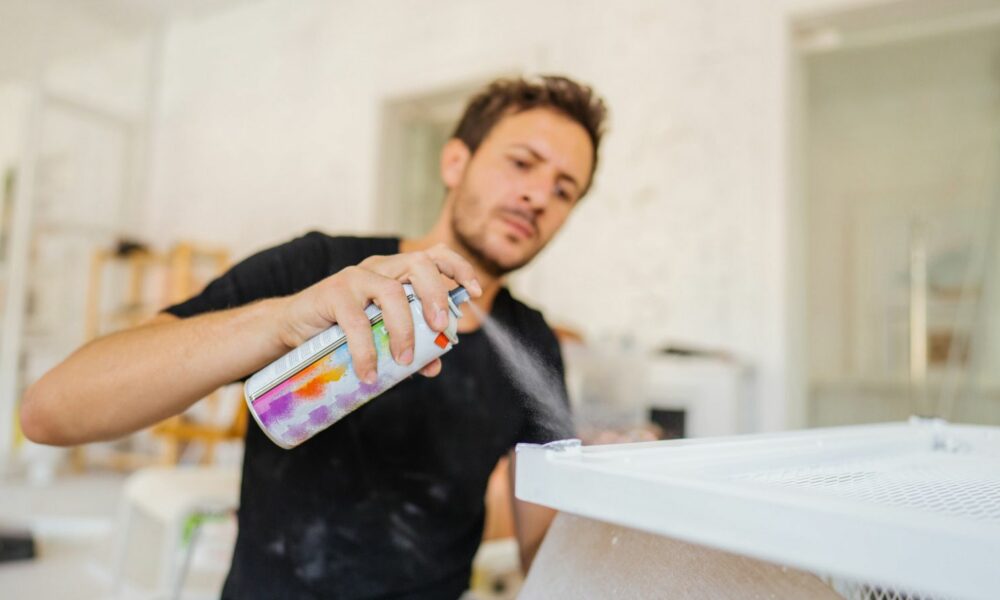How Can I Speed Up the Drying Process of Spray Paint?

Spray painting can be a fun and creative way to give new life to various objects. However, waiting for the paint to dry can be a tedious process. Fortunately, there are several ways to speed up the drying time of spray paint. This article will provide you with practical tips and techniques to achieve faster drying times without compromising the quality of your work.
Understanding Spray Paint Drying Times
What Affects Spray Paint Drying Times?
Spray paint drying times can vary depending on several factors. These include the type of paint, the thickness of the application, the surface being painted, and environmental conditions like temperature and humidity.
Types of Spray Paint
Different spray paints have different drying times. For example, enamel spray paints typically take longer to dry compared to lacquer spray paints. Quick-dry spray paints are also available and can significantly reduce drying times.
See here, how long does spray paint take to dry.
Preparing the Surface
Cleaning the Surface
A clean surface ensures that the paint adheres well and dries evenly. Remove any dirt, grease, or dust from the surface before painting.
Sanding the Surface
Sanding the surface helps create a smooth and even base for the paint to adhere to, which can speed up the drying process.
Using a Primer
Applying a primer can help the paint adhere better and dry faster. Choose a fast-drying primer for best results.
Choosing the Right Environment
Ideal Temperature for Drying
Spray paint dries faster in warmer temperatures. Aim for a temperature range between 65°F and 85°F (18°C to 29°C) for optimal drying.
Importance of Humidity Levels
High humidity levels can slow down the drying process. Try to paint in conditions where the humidity is below 50%.
Ventilation and Airflow
Good ventilation and airflow can help the paint dry faster. Ensure that the painting area is well-ventilated.
Application Techniques
Thin Coats vs. Thick Coats
Applying thin coats of paint dries faster than thick coats. Multiple thin coats also reduce the risk of drips and uneven drying.
Distance and Angle of Spray
Maintain a consistent distance and angle while spraying to ensure an even application. This helps the paint dry more uniformly.
Layering Techniques
Allow each coat to dry before applying the next one. This prevents the paint from becoming too thick and slows down the drying process.
Tools to Speed Up Drying
Heat Guns and Hair Dryers
Using a heat gun or hair dryer on a low setting can speed up the drying process. Keep the device moving to avoid overheating any area.
Fans and Air Circulators
Fans and air circulators can increase airflow around the painted object, helping it dry faster.
Dehumidifiers
A dehumidifier can reduce humidity levels in the painting area, which helps the paint dry more quickly.
Quick-Dry Spray Paints
Benefits of Quick-Dry Paints
Quick-dry spray paints are formulated to dry faster than regular spray paints. They are ideal for projects that require a quick turnaround.
Popular Brands
Some popular brands that offer quick-dry spray paints include rustoleum vs krylon, and Montana Gold. Check the labels for drying time information.
Post-Application Tips
Avoiding Dust and Debris
Keep the painted object in a dust-free environment while it dries. Dust and debris can stick to the wet paint and ruin the finish.
Handling the Painted Object
Avoid handling the painted object until it is completely dry. Touching wet paint can leave fingerprints and smudges.
Common Mistakes to Avoid
Overloading Paint
Applying too much paint at once can cause it to dry unevenly and take longer to dry. Stick to thin, even coats.
Insufficient Drying Time Between Coats
Rushing the drying process by not allowing enough time between coats can result in a poor finish. Be patient and let each coat dry properly.
Safety Precautions
Proper Ventilation
Ensure the painting area is well-ventilated to avoid inhaling fumes. Use fans or open windows to improve airflow.
Protective Gear
Wear protective gear such as masks, gloves, and goggles to protect yourself from paint fumes and splatters.
Conclusion
Speeding up the drying process of spray paint involves a combination of proper preparation, the right environment, and careful application techniques. By following these tips, you can achieve a smooth and professional finish in less time.
FAQs
- How long does it typically take for spray paint to dry? Spray paint usually takes about 20 minutes to be dry to the touch and 24 hours to fully cure, depending on the type of paint and environmental conditions.
- Can I use a hair dryer to speed up the drying process? Yes, a hair dryer on a low setting can help speed up the drying process. Keep it moving to avoid overheating the paint.
- What is the best temperature for spray painting? The best temperature for spray painting is between 65°F and 85°F (18°C to 29°C).
- How can I prevent dust from settling on my wet paint? Keep the painted object in a clean, dust-free environment and avoid painting in windy conditions.
- Is quick-dry spray paint as durable as regular spray paint? Quick-dry spray paints are designed to dry faster but are generally as durable as regular spray paints when properly applied.






